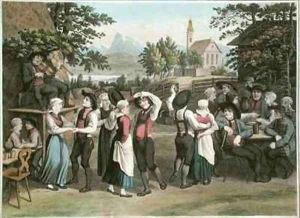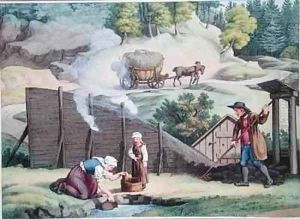Gauermann, Jakob Paintings
Jakob Gauermann was an Austrian painter known for his detailed landscapes and rural scenes. Born on September 20, 1786, in Miesenbach, Lower Austria, he was the son of a bronze caster and grew up in a family environment that was conducive to developing artistic skills. Gauermann’s early life was marked by the picturesque surroundings of the Austrian countryside, which would later become a central theme in his artwork.
Gauermann received his initial training from his father, and his talent was evident from a young age. He went on to study at the Academy of Fine Arts Vienna, where he was influenced by the works of old masters. During his time at the academy, he honed his skills in drawing and painting, developing a keen eye for detail and a love for nature that would define his artistic career.
His work was characterized by its fine detail, realistic depictions of the natural world, and a romantic sensibility. Gauermann often depicted scenes of the Austrian Alps, rural life, and animals, particularly emphasizing the harmonious relationship between humans and nature. His paintings are marked by their vividness and precision, capturing the changing moods of the landscape with a nuanced palette and skilled use of light and shadow.
Throughout his career, Jakob Gauermann gained recognition for his contributions to Austrian art. He exhibited frequently and received numerous commissions, which allowed him to travel throughout Europe. His travels further enriched his paintings, as he was exposed to various landscapes and rural settings beyond his native Austria.
Gauermann’s legacy is preserved through his influence on Austrian landscape painting and his role in shaping the Biedermeier style, which was characterized by a focus on middle-class simplicity and domesticity. His works are held in many museums and private collections, where they continue to be appreciated for their beauty and historical significance.
Jakob Gauermann passed away on June 21, 1863, in Vienna, leaving behind a body of work that continues to resonate with art lovers and collectors for its idyllic portrayal of the natural world and the simplicity of rural life. He was also the father of Friedrich Gauermann (1807-1862), who became a notable painter in his own right, often working in a similar style to that of his father.

